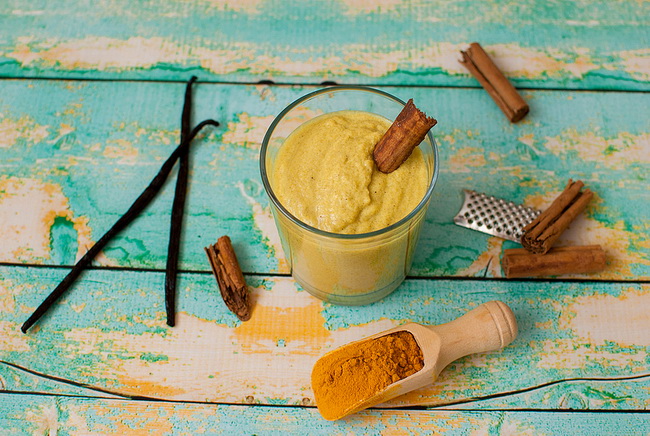- Make It Yourself Lavender Heart-Shaped Bath Bombs!
- 20 Things You Never Knew About “Down There”
- 12 Best Foods For Those Suffering From Arthritis Pain
- 12 Personal Hygiene Mistakes Almost Everyone Makes (Mom Never Told You About #4!)
- 15 Medicinal Plants And Herbs From The Cherokee People
- 12 Mind-Blowing Benefits Of Drinking Coconut Water During Pregnancy
- 12 Outstanding Winter Foods That Won’t Fatten You Up Like A Christmas Turkey
12 Incredible Non-Pharmaceutical Ways to Deal with Fibromyalgia

Photo credit: bigstock.com
Sometimes called fibromyositis or fibrositis, fibromyalgia is a chronic condition most easily described as widespread pain. Its exact cause is unknown, making treatment impossible. At this point, doctors can only treat the symptoms.
Fibromyalgia is far more common in women than in men, outnumbering them seven to one. Many researchers believe that this condition arises from a combination of physical and emotional stressors. It’s thought that this disease affects as many as five million Americans every year, but many people believe the number is most likely double that as this disease is often dismissed or misdiagnosed. This is because fibromyalgia does not really show up on any laboratory tests and is simply a disease of description. Doctors are trained to read lab tests. When they have little to go on, many people are misdiagnosed or are simply dismissed as being hypochondriacs.
Some of the most common symptoms of fibromyalgia include excruciating muscle pain; sensitivity to noise, smells or bright lights; stiff joints’ overwhelming fatigue; numbness in the extremities or tingling sensations; migraine headaches; TMJ; sleep disorders; IBS and feelings of anxiety and depression.
If you or someone you love suffers from fibromyalgia, then you are already well aware of the problems that come with this disease. Friends and family who don’t see anything physically wrong often tell the sufferer that they need psychiatric help or that they should just “snap out of it.” As with depression, simply because you cannot see it does not mean that it isn’t there.
As of now, the best you can do is to treat the symptoms and try alternative treatments. Many people find relief from a wide variety of complementary treatments. What works for one might not work for another, so if one method does not seem to work for you, try another.
Continue to Page 2

Photo credit: bigstock.com
1. SAMe
SAMe, S-adenosylmethionine, is a naturally occurring substance in the body and is involved in numerous processes, including playing a part in pain relief. This compound has been shown to relive the chronic pain of osteoarthritis as well as offering relief from depression. A few studies have shown that SAMe can reduce the typical symptoms of fatigue, pain and stiffness brought on by fibromyalgia. Although there are not many studies involving SAMe and fibromyalgia, the ones that have been done show that this does work for some people. Take SAMe supplements as directed or ask your doctor about an appropriate dose for your situation.
2. Yoga and Meditation
Relaxation programs such as tai chi, yoga and meditation can be of great help when it comes to controlling the symptoms of fibromyalgia. One study, conducted in 2010 by the Oregon Health & Science University, found that yoga helped combat common fibromyalgia symptoms such as fatigue, poor sleep, pain, stiffness, anxiety, depression, poor memory and poor balance. Another study out of Canadian York University found that a 75 minute hatha yoga class, taken twice weekly for a two month period, helped to increase cortisol levels in female subjects who had fibromyalgia, which reduced their pain and improved mindfulness. For reasons not understood, those with fibromyalgia had lower than normal levels of cortisol.
3. Vitamin D and Magnesium
Both magnesium and vitamin D levels have been found to be much lower in subjects with fibromyalgia. There are no studies known that show taking vitamin and mineral supplements can help to treat fibromyalgia but since most people with this disease have low levels of these two important substances, why not give it a try? Vitamin D does have effects on muscle and nerve function, and there have been studies which show that low levels of this vitamin can be associated with greater feelings of pain. One very small clinical study, which was published in the online Pain Medicine journal in 2012, showed that for 30 women who took vitamin D supplements for two months had improved fibromyalgia symptoms. Talk to your doctor about taking magnesium and vitamin D supplements.
Continue to Page 3

Photo credit: bigstock.com
4. Mild Exercise
Those with fibromyalgia are already making a face at this one. However, the truth is that a long-term exercise program has been found to reduce the symptoms of this disease. Exercise restores the body’s natural neurochemical balance, increasing the levels of endorphins to fight pain. It will also prevent the wasting away of muscle tissue. It can be difficult to even think about exercise when you are exhausted and when every joint in your body seems to ache, but it is imperative that you try to stay as physically active as possible.
To start, try some mild exercise for just 10 to 15 minutes each day. If you have access to a swimming pool, try swimming or even just treading water. Stretching exercises, a walk around the block — anything that gets you out of bed or off the sofa is good. Many people find that doing seated exercises is an easy way to start moving, and then they gradually and slowly move on to more movement and weight-bearing exercises.
5. Remove Toxins and Food Sensitivities
Many people with fibromyalgia have a poor diet. Food sensitives can also trigger a painful attack. Begin by isolating certain foods from your diet to see if they trigger an attack. The most common offenders are dairy, gluten, red meat, corn, potatoes, tomatoes and eggs. Remove these from your diet for a 30 day period, then, one by one, begin to introduce them to your meal plans and see if you notice a difference in how you feel. You should always eat organic fruits and vegetables along with grass-fed beef to limit your toxin exposure. Concentrate on a diet heavy in organic fruits, vegetables, wild-caught fish, free range poultry, rice, olive oil and coconut oil.
6. Epsom Salt Soak
This isn’t really salt but is actually magnesium sulfate. This is an easy way for your body to absorb magnesium. Since most people with fibromyalgia have a deficiency in magnesium, and it’s hard for the body to digest supplements, this is an easy way to enjoy a relaxing soak and get your magnesium at the same time. Mix two cups of Epsom salt in a bath with very warm water. Soak in this bath for 20 to 30 minutes at a time, at least three times each week.
Continue to Page 4

Photo credit: bigstock.com
7. Cayenne Pepper
The active compound in this hot pepper is called capsaicin, which is a natural pain reliever. It also improves blood circulation, which will keep you from feeling cold. You can take cayenne pepper extracts or capsules, as well as add some to your cooking. There are many lotions and creams that contain cayenne pepper for the relief of joint pain. You can try using a cream that contains at least 0.025 percent of capsaicin on areas where you have body or joint aches. Ask your doctor for the correct dosage of a cayenne pepper supplement that would be safe for your condition.
8. Acupuncture
Acupuncture can control fibromyalgia symptoms by restoring the levels of energy that flow through pathways in the body. This ancient Chinese healing method also changes the levels of neurotransmitters in the spinal column and the brain. This type of alternative therapy has had tremendous success for those with fibromyalgia. It induces relaxation and reduces feelings of anxiety. Speak to your doctor, physical therapist or neurologist for a referral to a qualified acupuncturist.
9. Ginger
This mildly warming spice has both pain-relieving compounds and anti-inflammatory substances that help reduce common fibromyalgia symptoms. You can consume ginger tablets if you are not a fan of the flavor. Talk to your doctor about the proper dosage for you. Alternately, you can drink ginger tea two or three times each day for the relief from symptoms.
Continue to Page 5

Photo credit: bigstock.com
10. Omega-3 Fatty Acids
These fatty acids are natural, unsaturated fats that are well-known ways of reducing inflammation and neuropathic pain. They are also used to curb joint pain and stiffness. You can eat more foods that contain omega-3 fatty acids such as walnuts, flaxseeds, wild salmon, sardines and herring three or more times each week, or you can opt for an omega-3 supplement. Since omega-3 supplements or fish oil can interfere with certain medications, you should always talk to your doctor first before consuming these supplements.
11. Turmeric
Turmeric has powerful anti-inflammatory compounds, so this is an excellent choice for those who have extremely painful or stiff joints. Mix one teaspoon of turmeric powder in one cup of milk and heat just to a boil. Cool, and drink while it is still warm, but not hot. Drink once or twice each day for best results. You can also speak to your doctor about taking a turmeric supplement. Most people consume 400 to 600 mgs three times each day, but consult your physician before starting this or any other herbal program.
SEE ALSO: You Don’t Have to Suffer from Fibromyalgia!
12. Massage Therapy
Massage therapy not only helps to relax your muscles, it will also improve your range of motion. Massage therapy will stimulate the production of natural compounds in the body known to be natural painkillers. One type of massage that has been particularly beneficial to those with fibromyalgia is called manual lymph drainage therapy, or MLDT. Ask your physician or physical therapist for a referral to a massage therapist who specializes in those with fibromyalgia.
Extra Tips:
- Get plenty of sleep by establishing a regular sleep routine.
- Avoid caffeine, as it can make feelings of anxiety and restlessness worse.
- If you cannot sleep, try a melatonin supplement. Speak to your doctor about the proper dosage for your condition.
References:
































